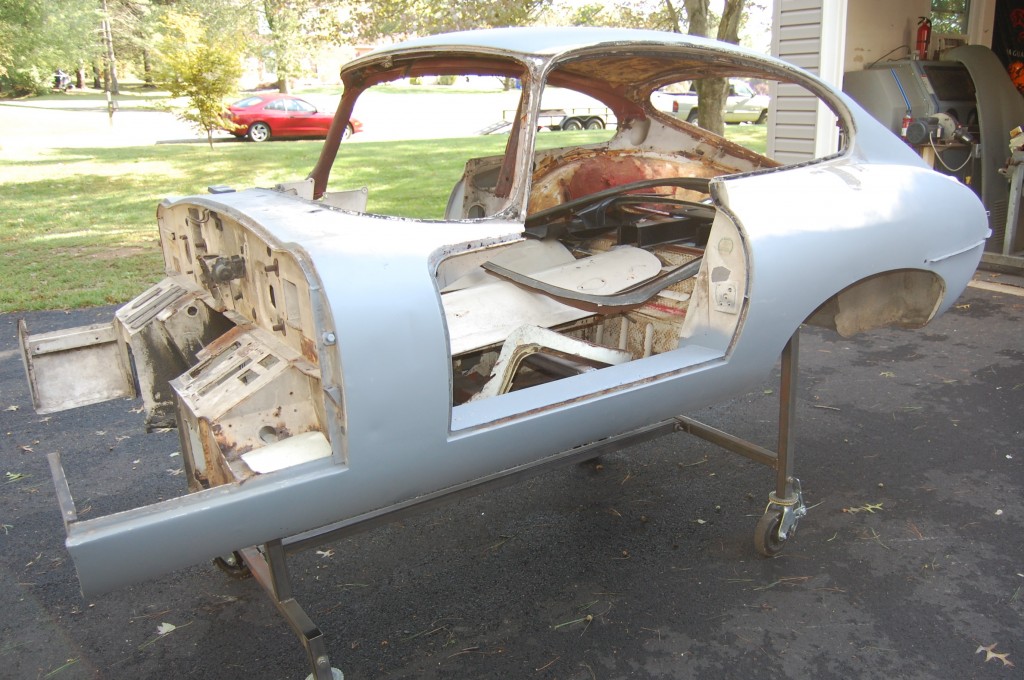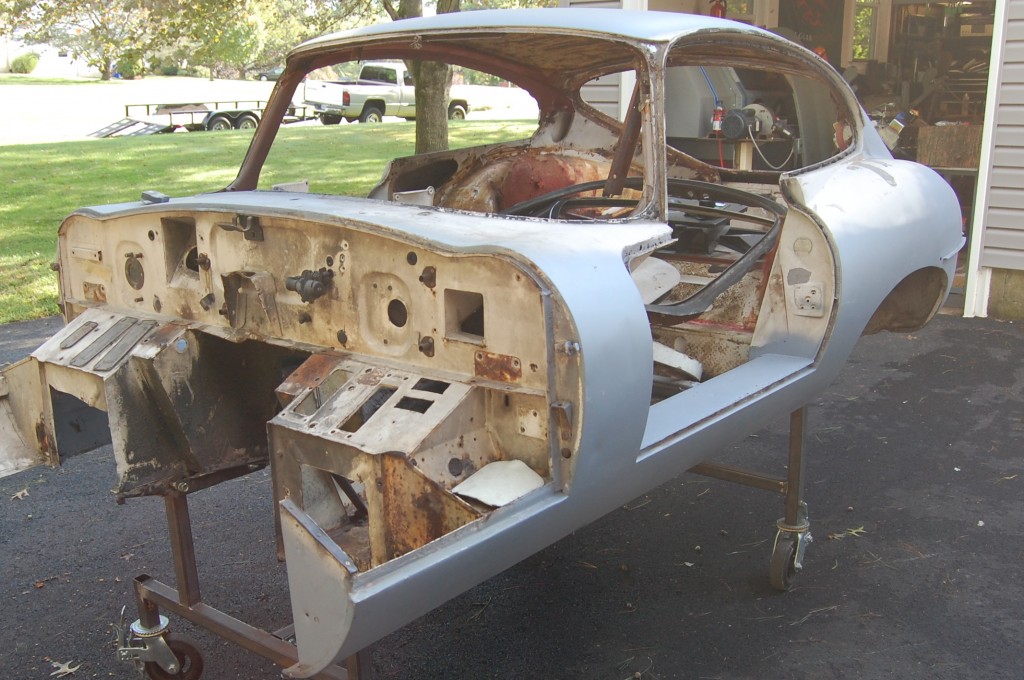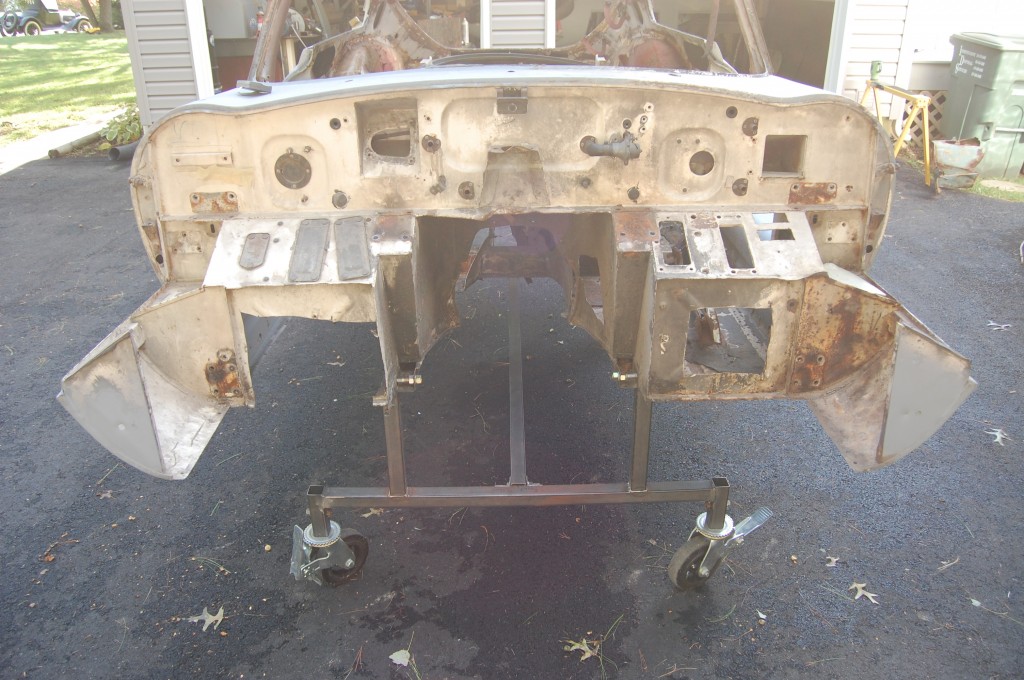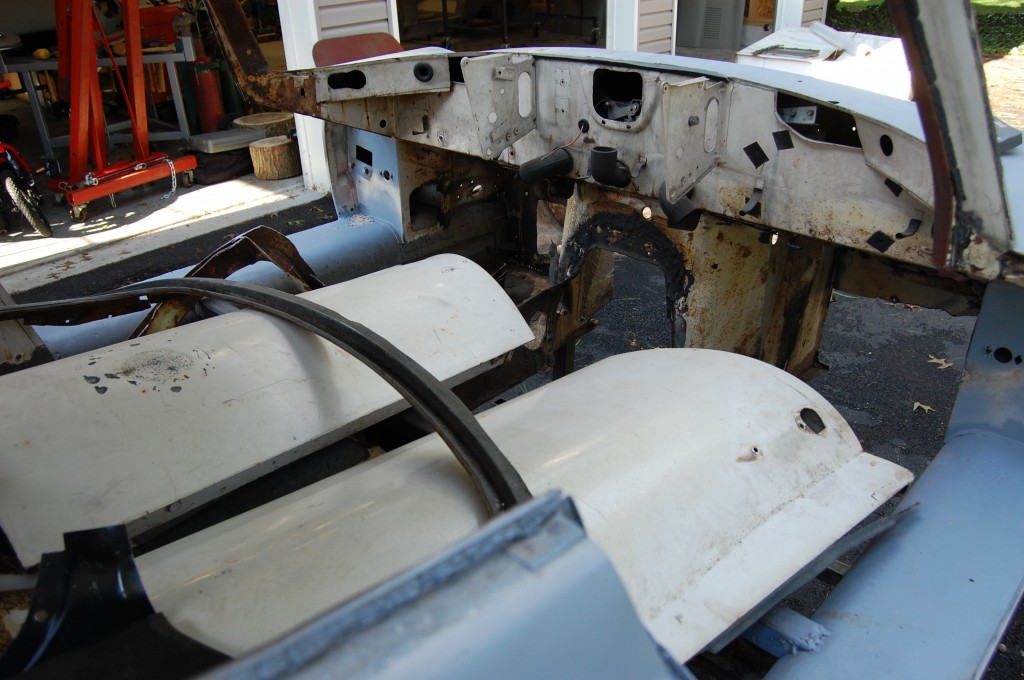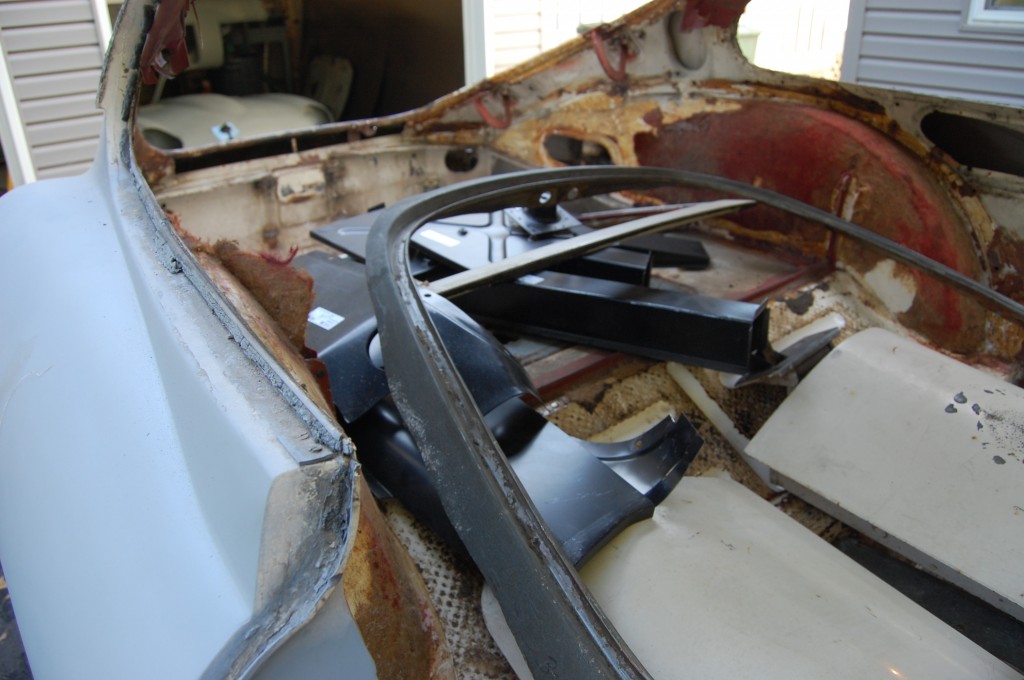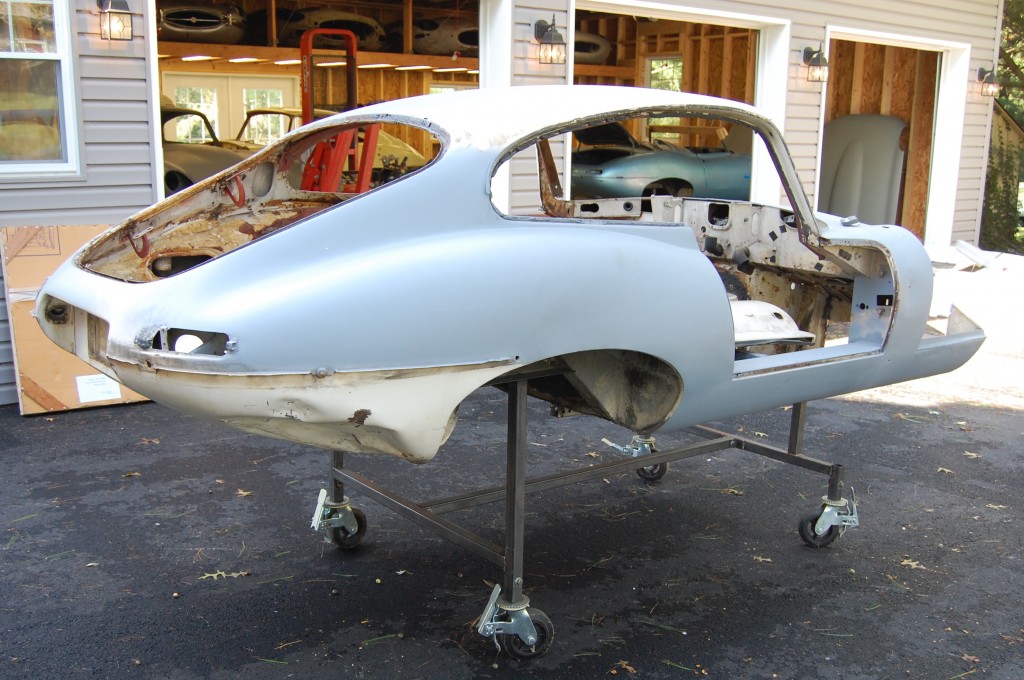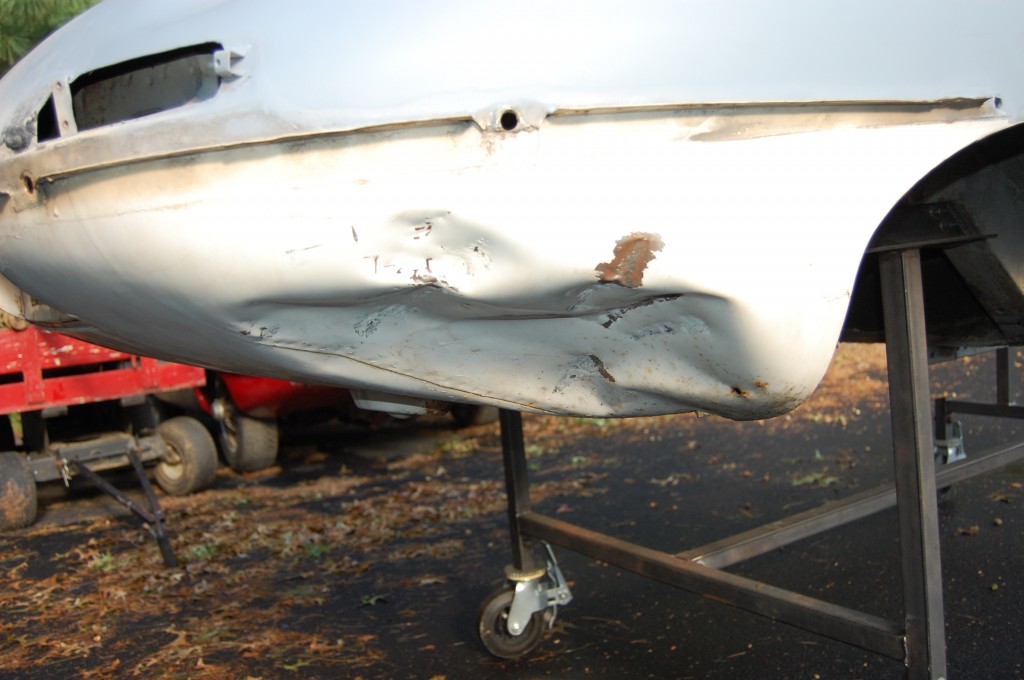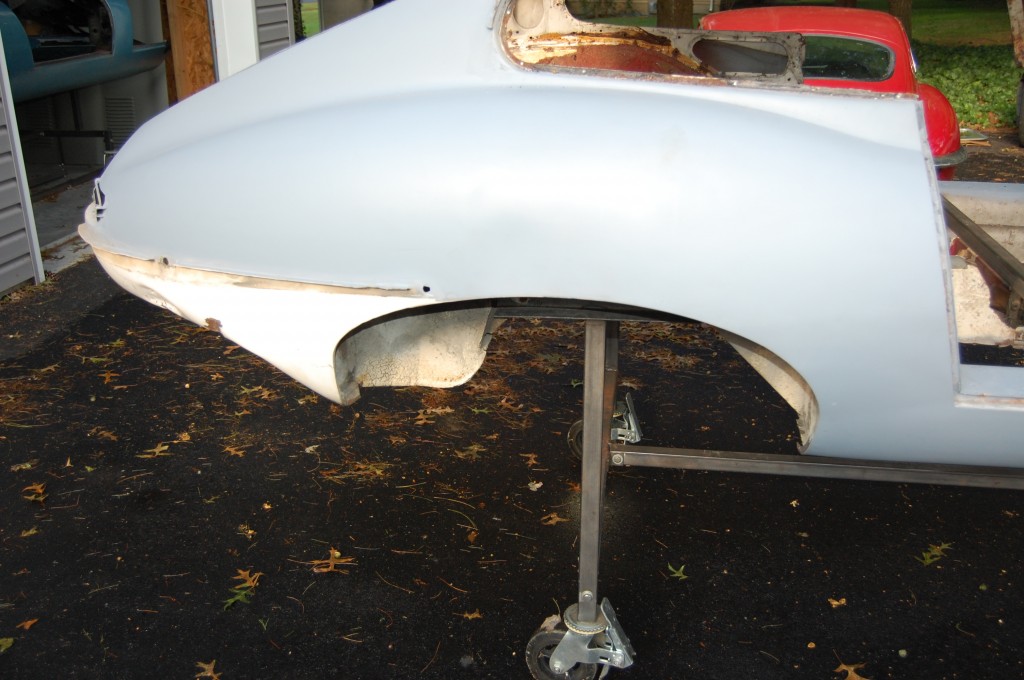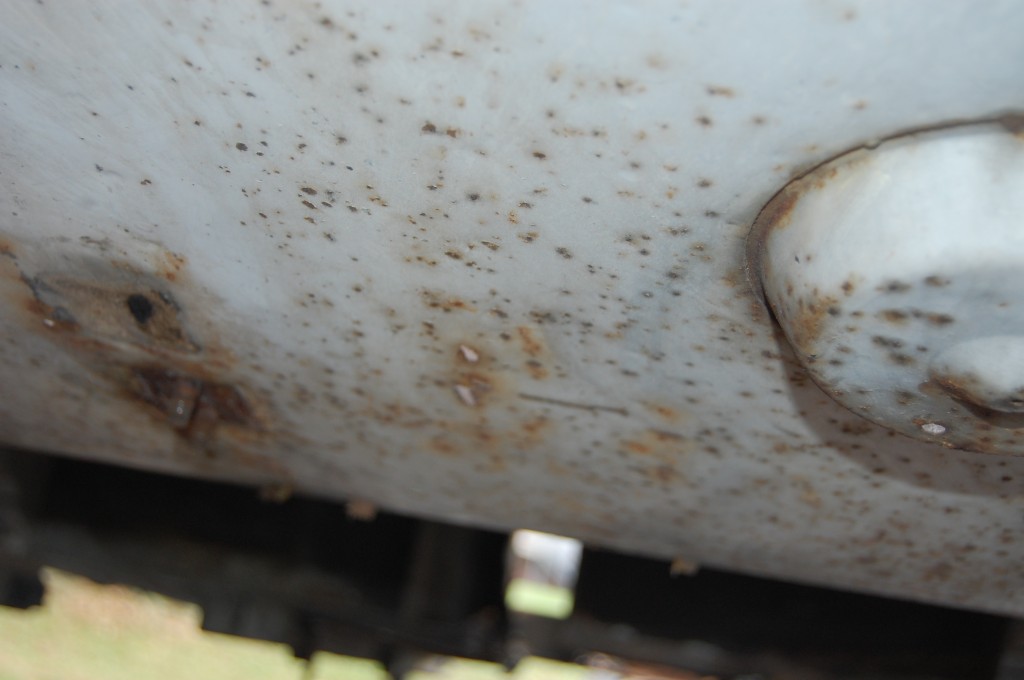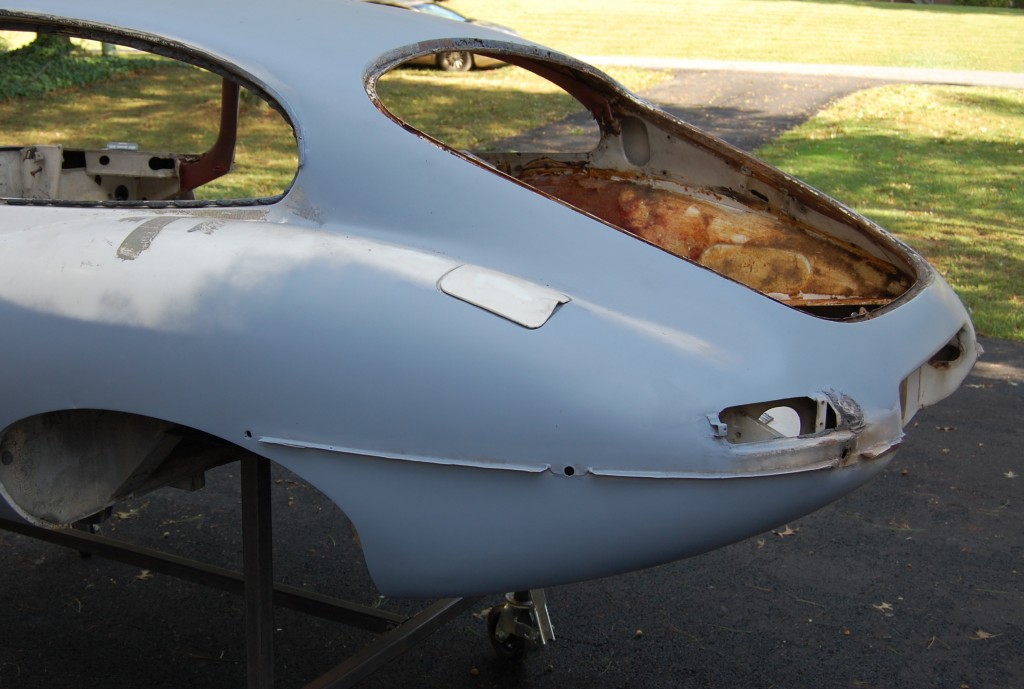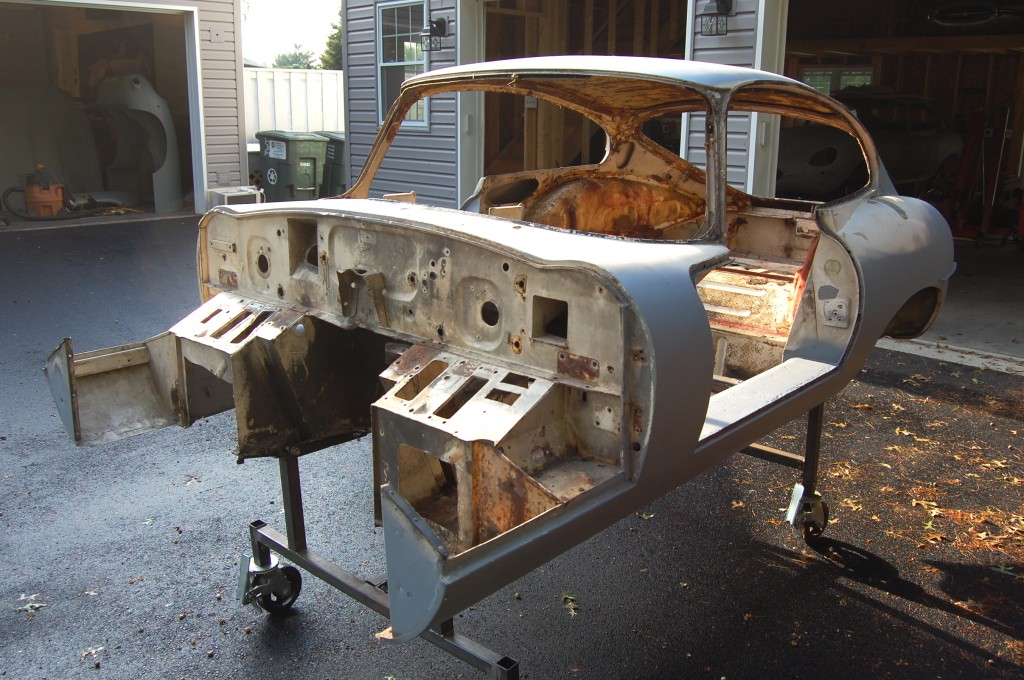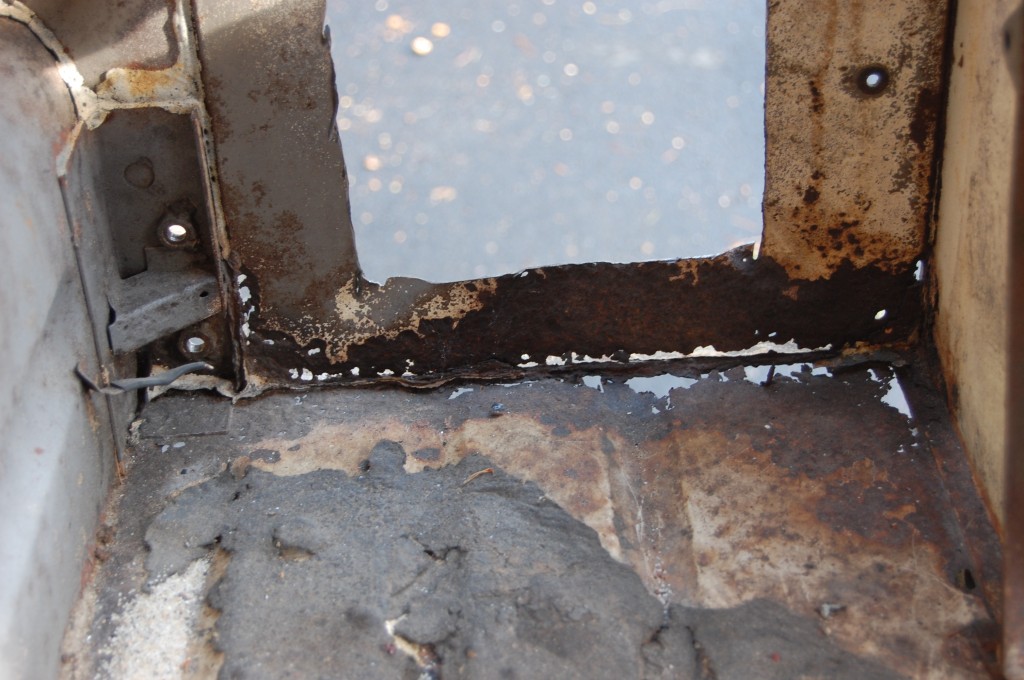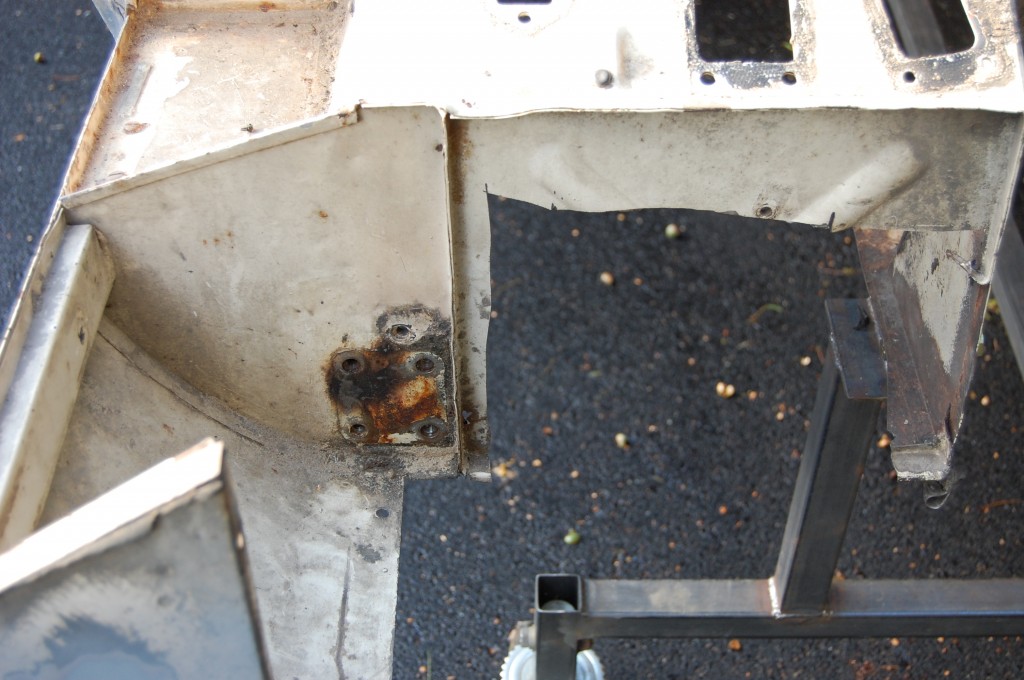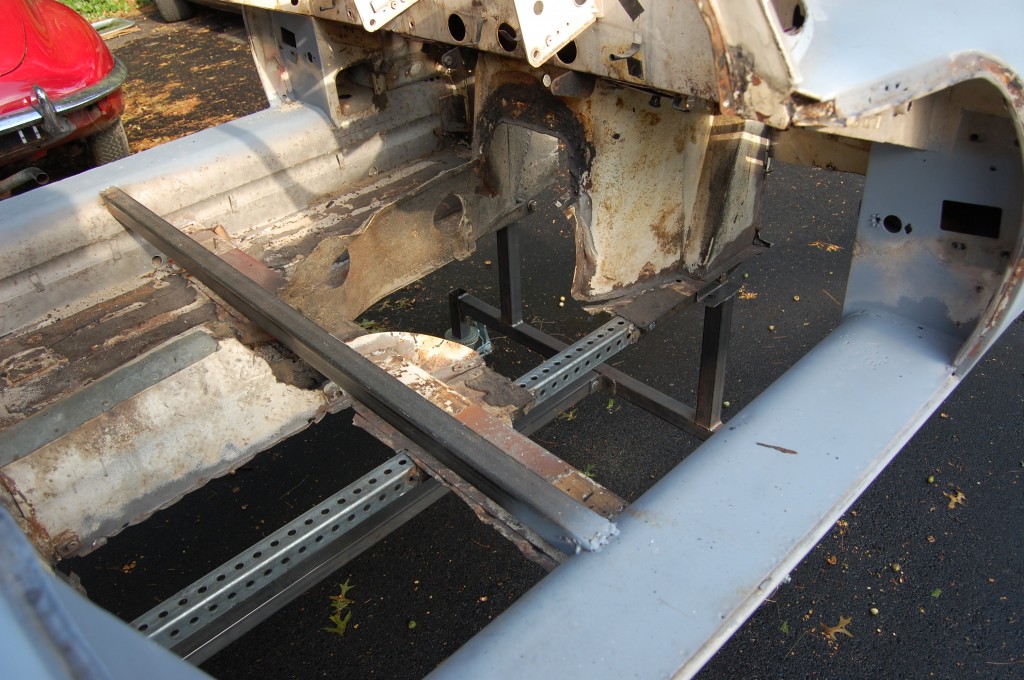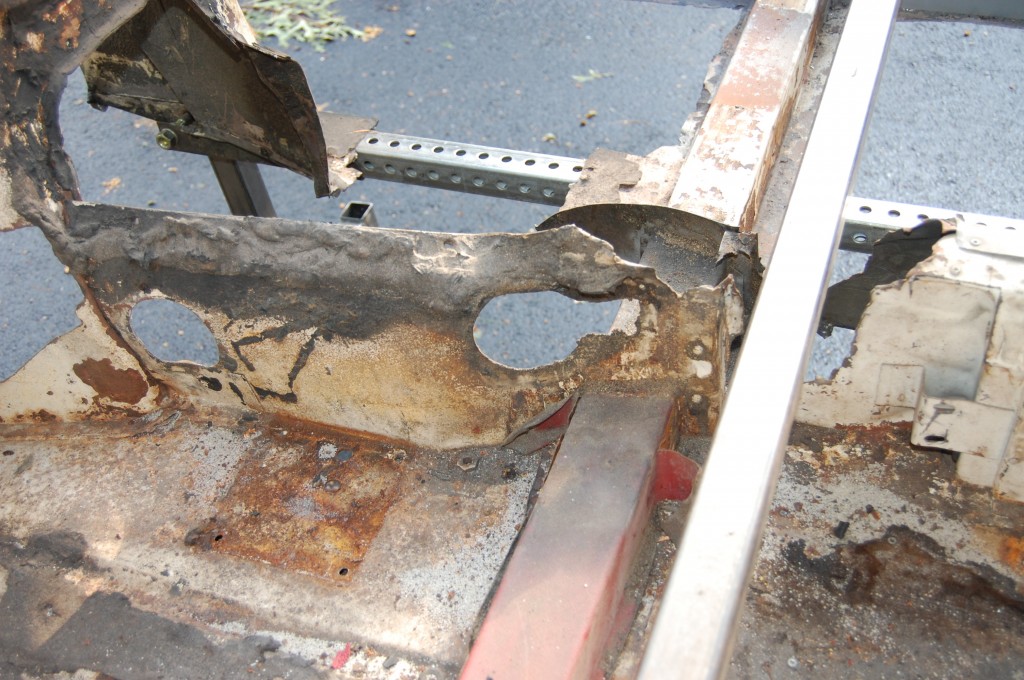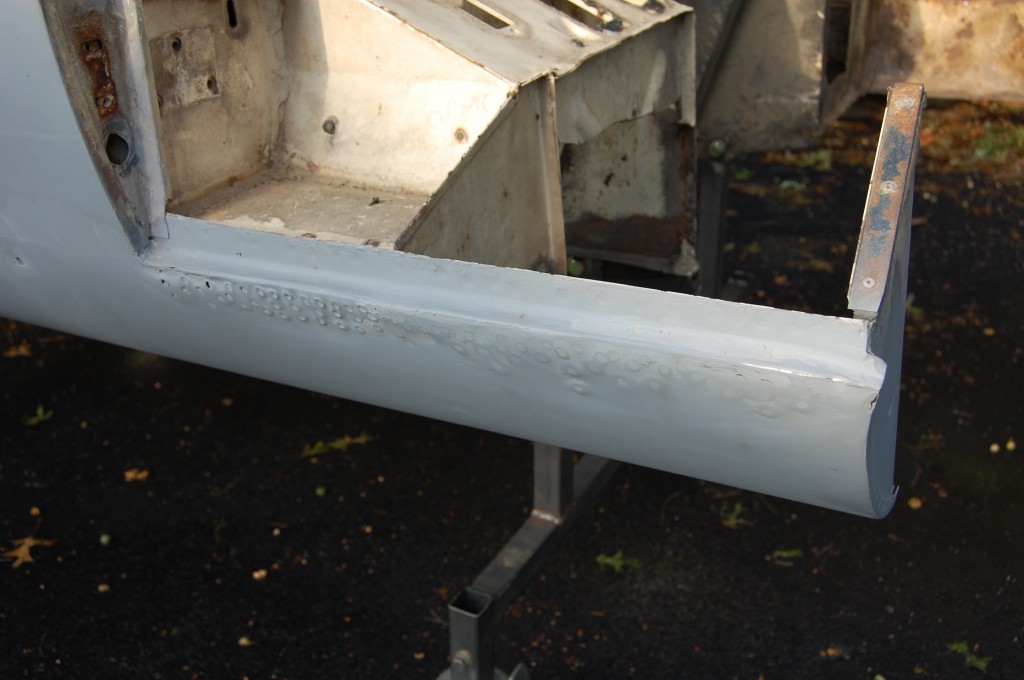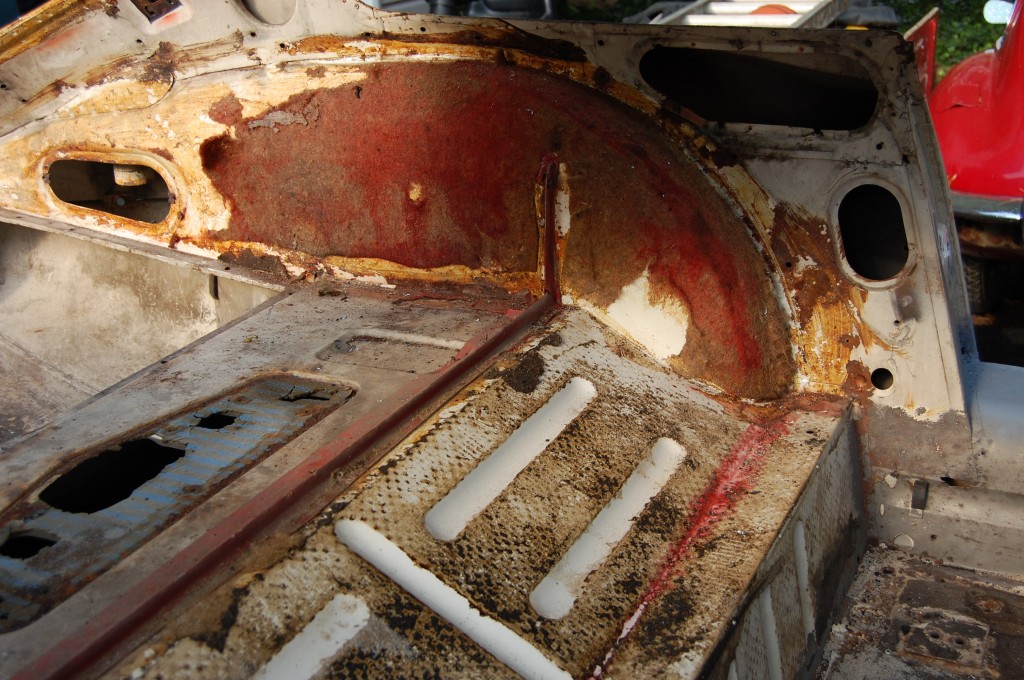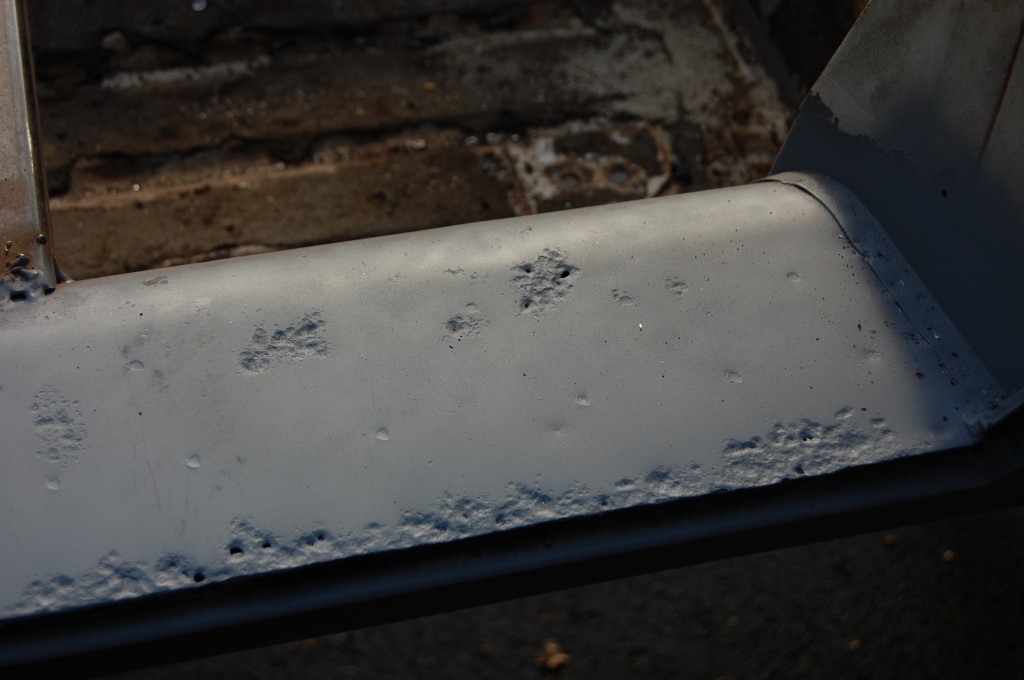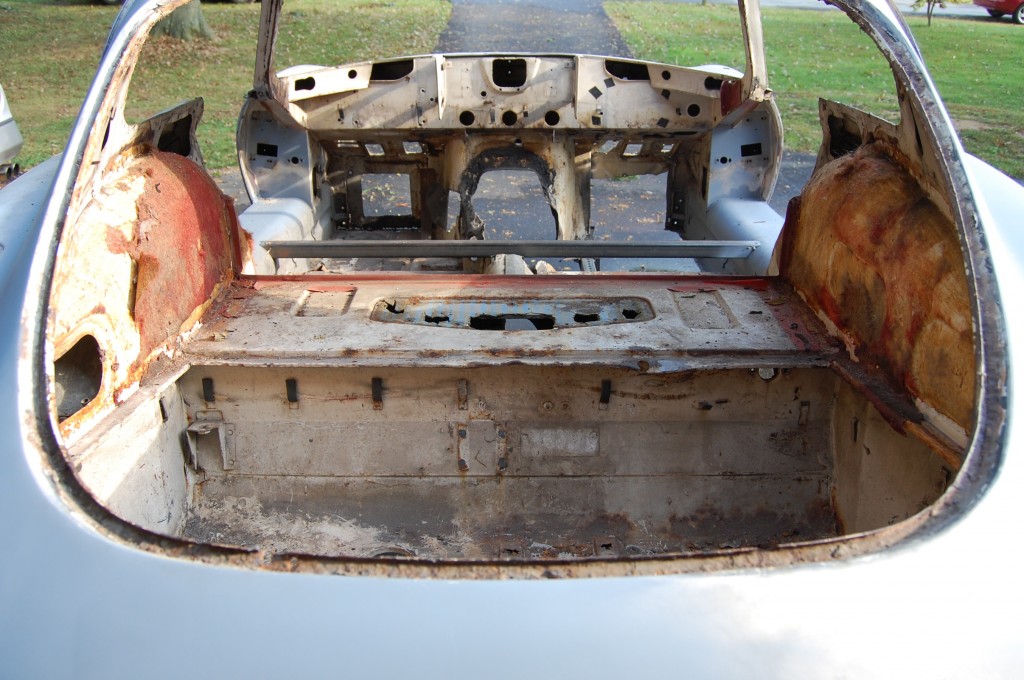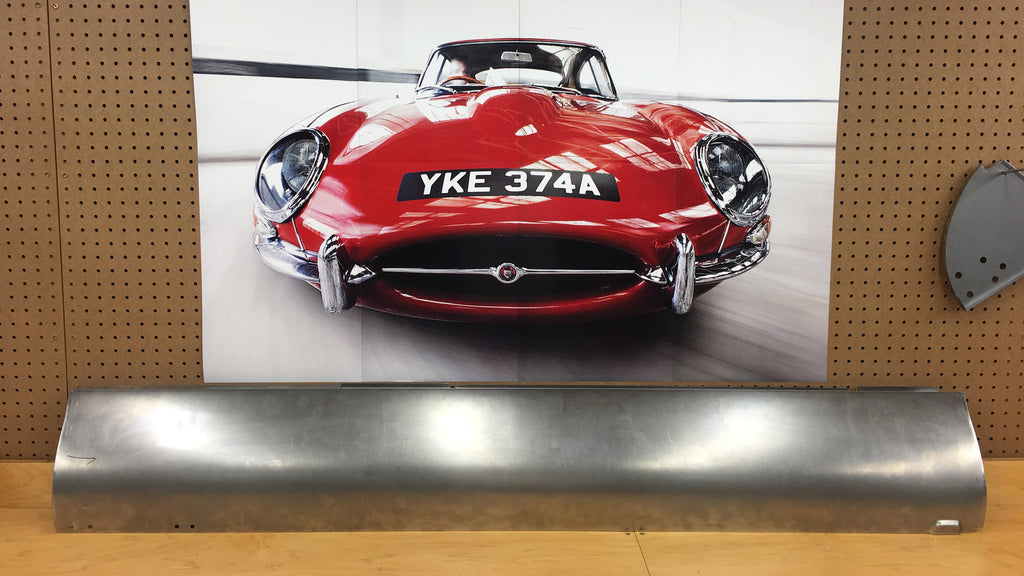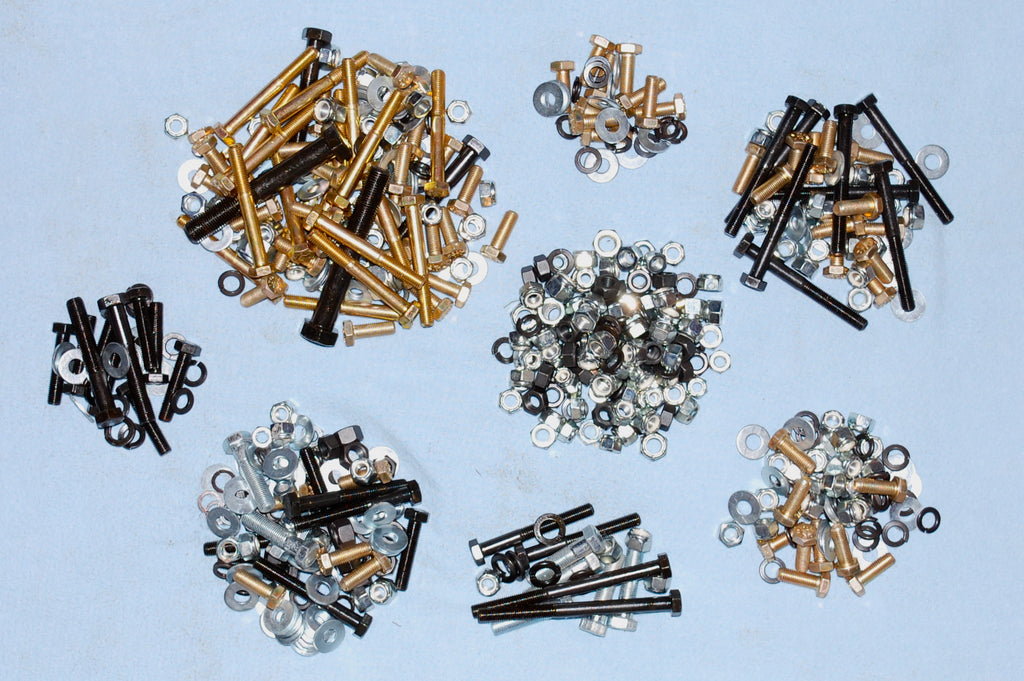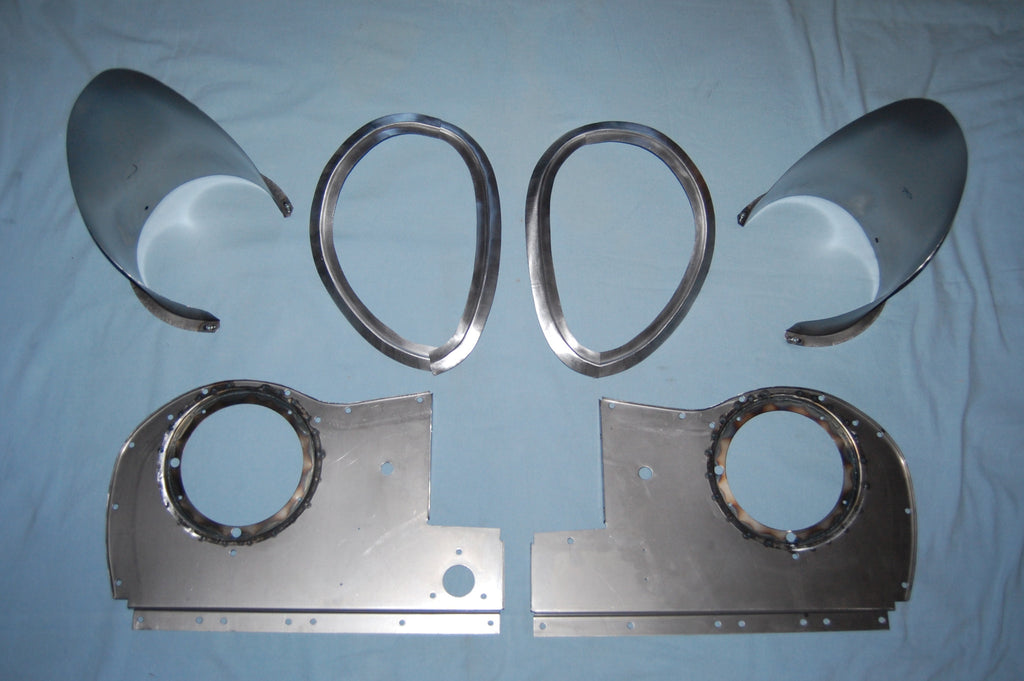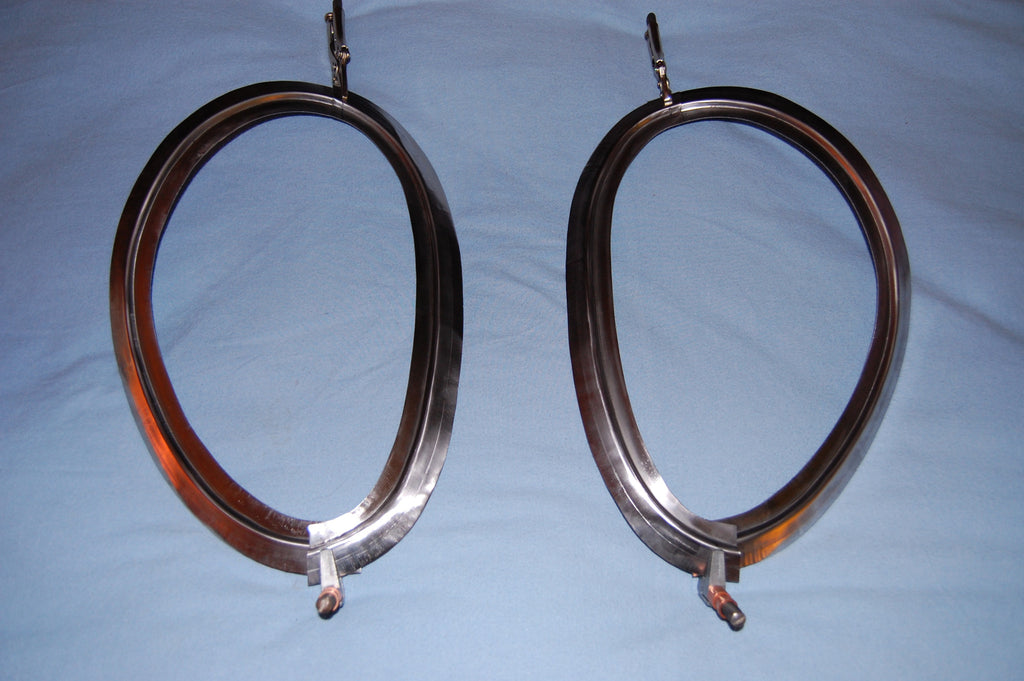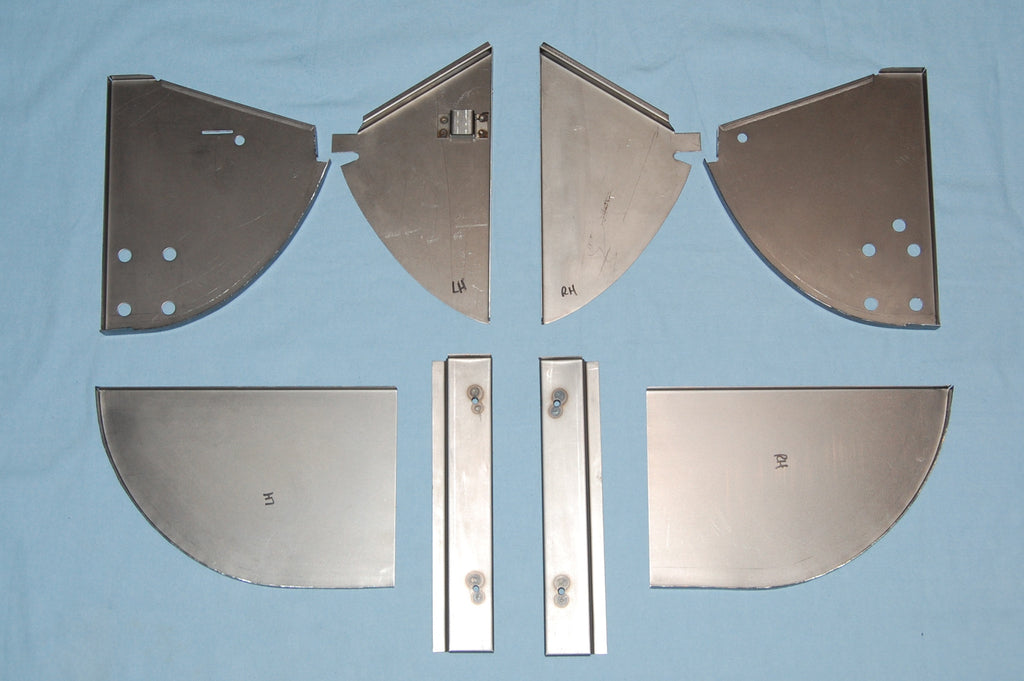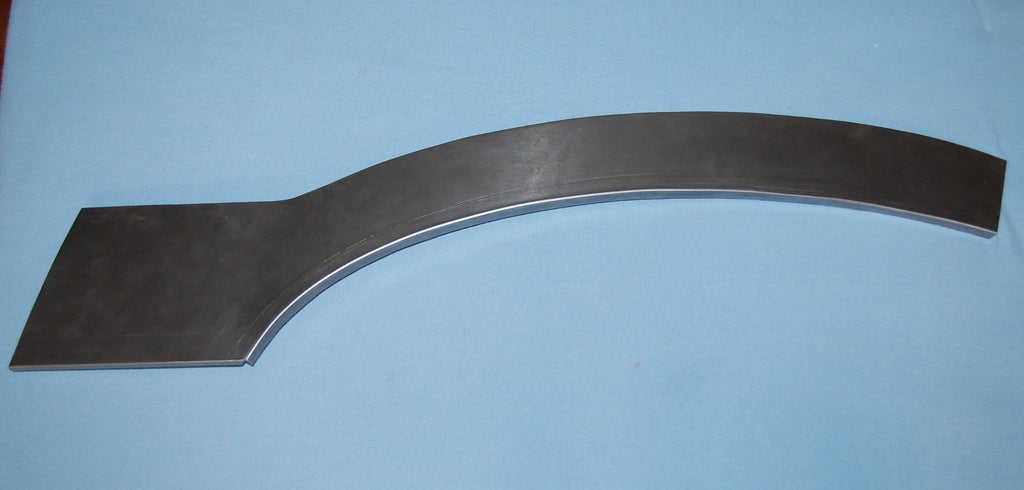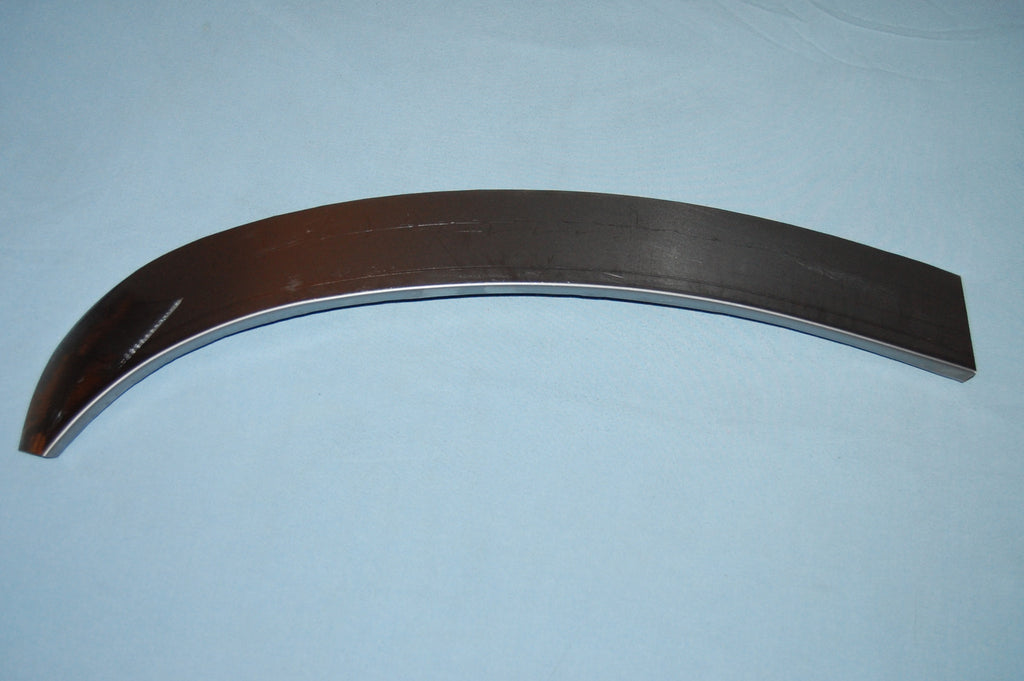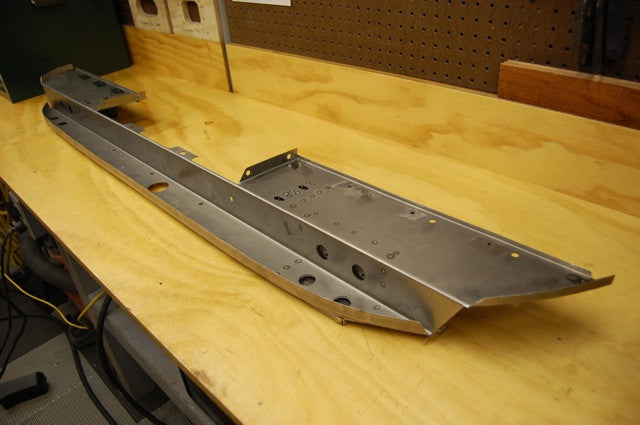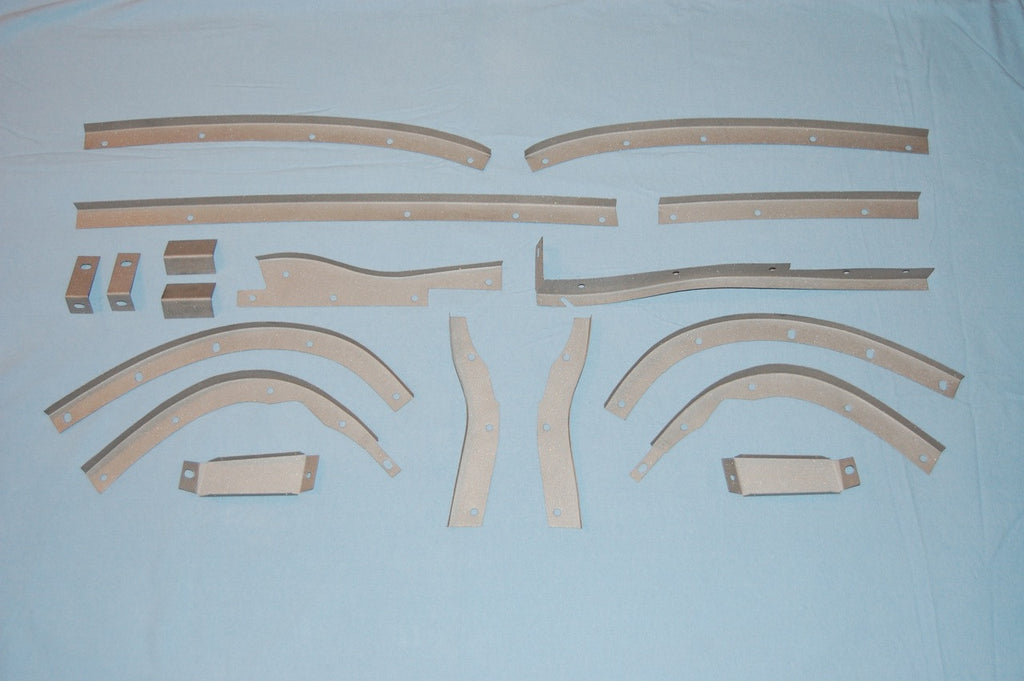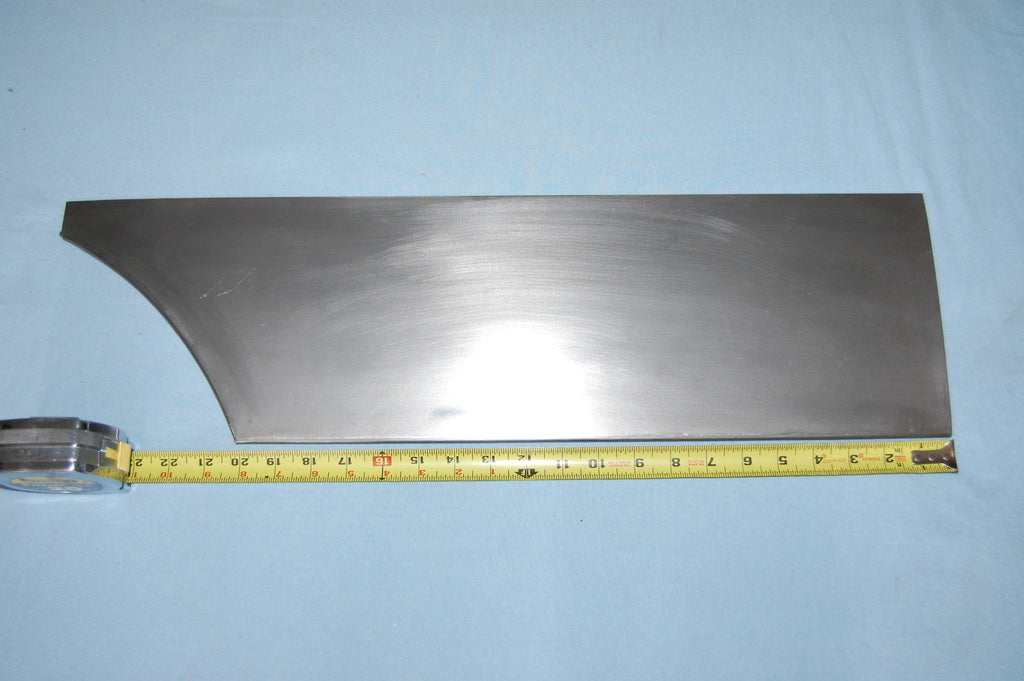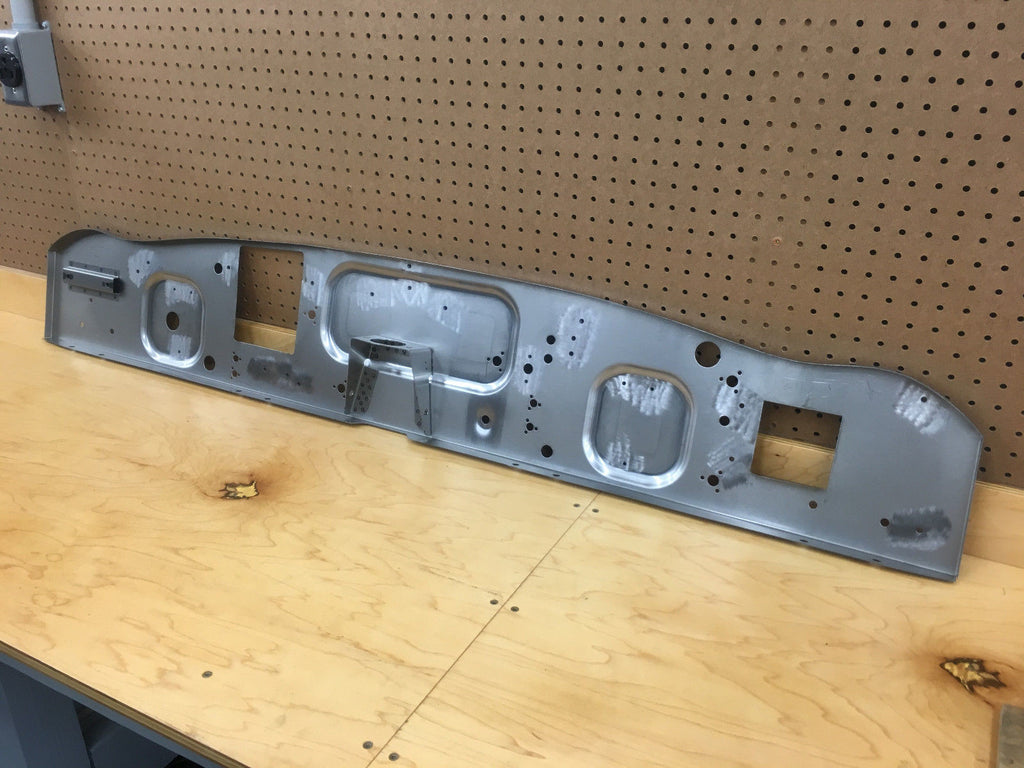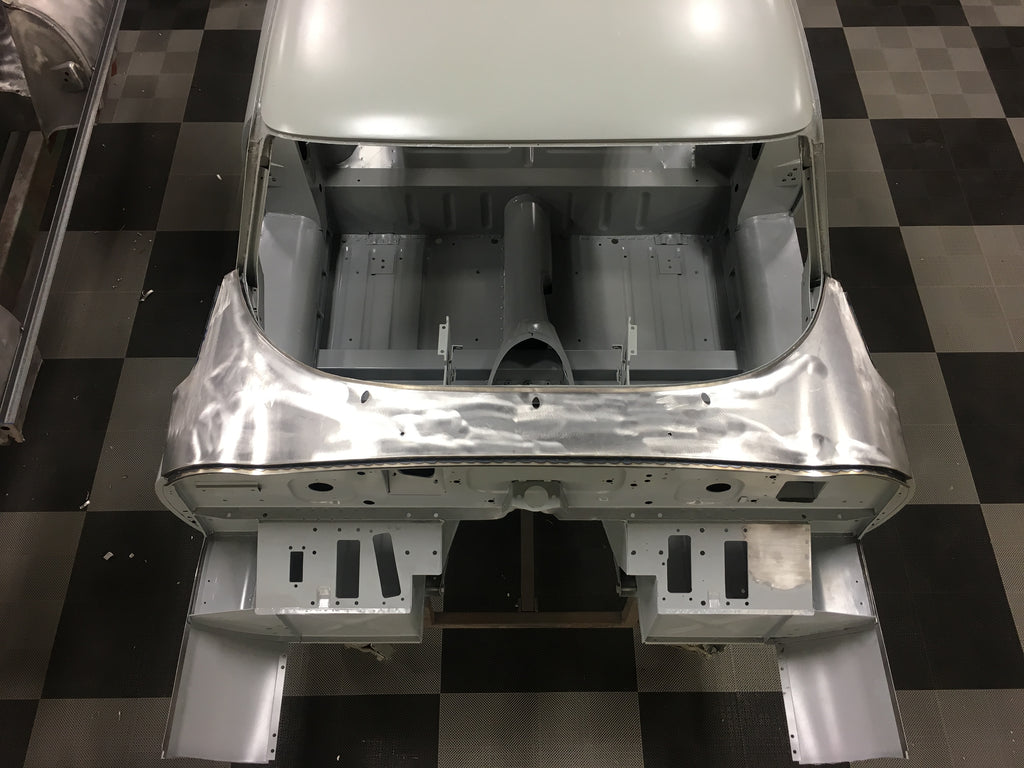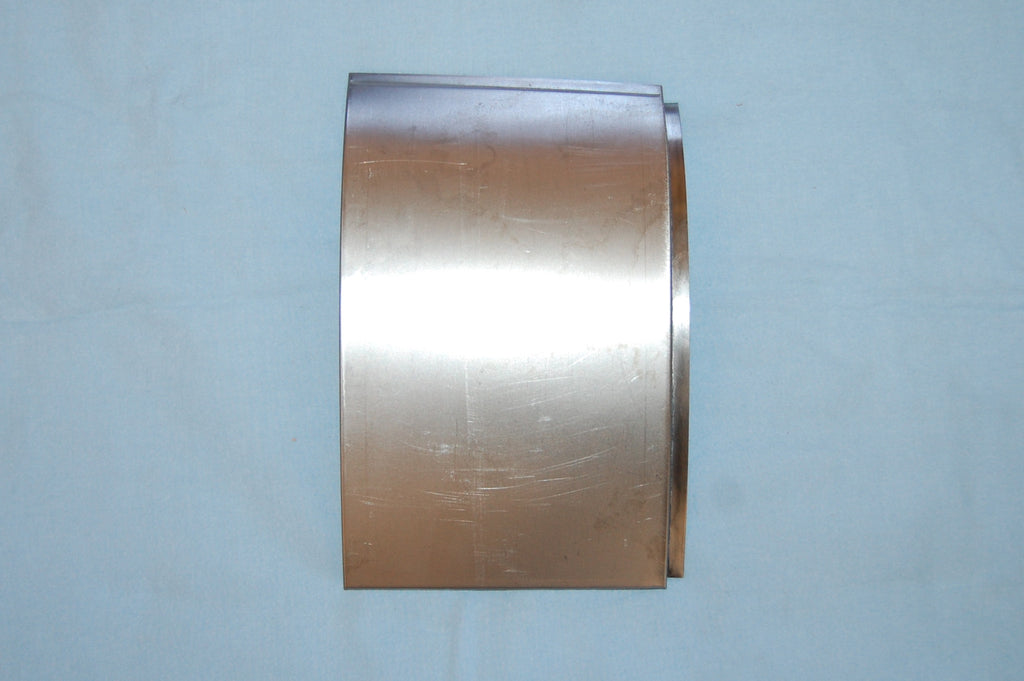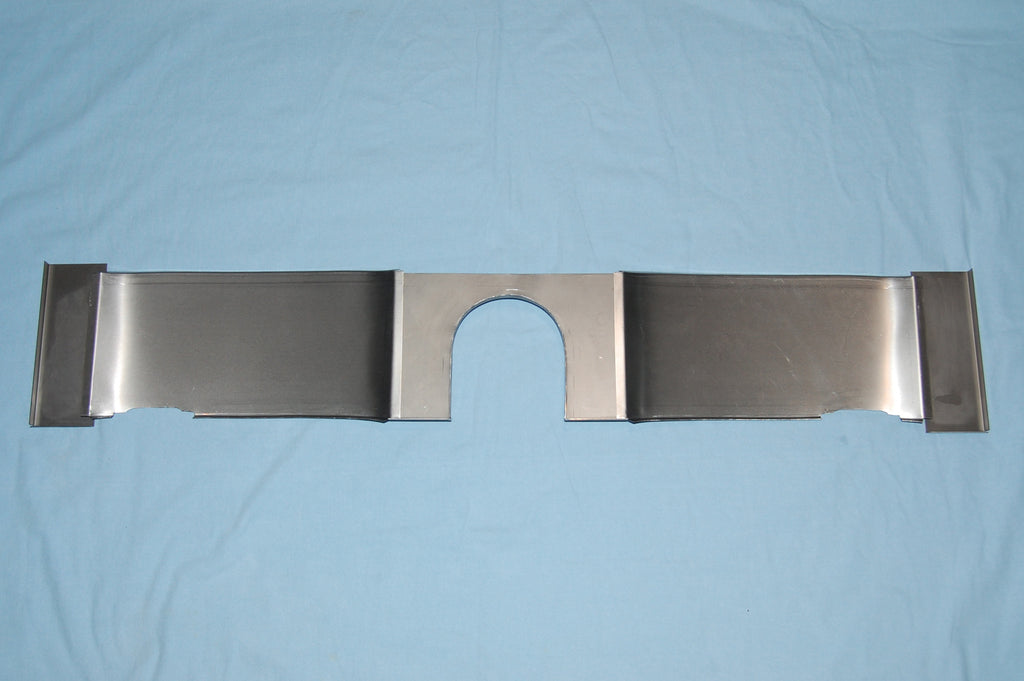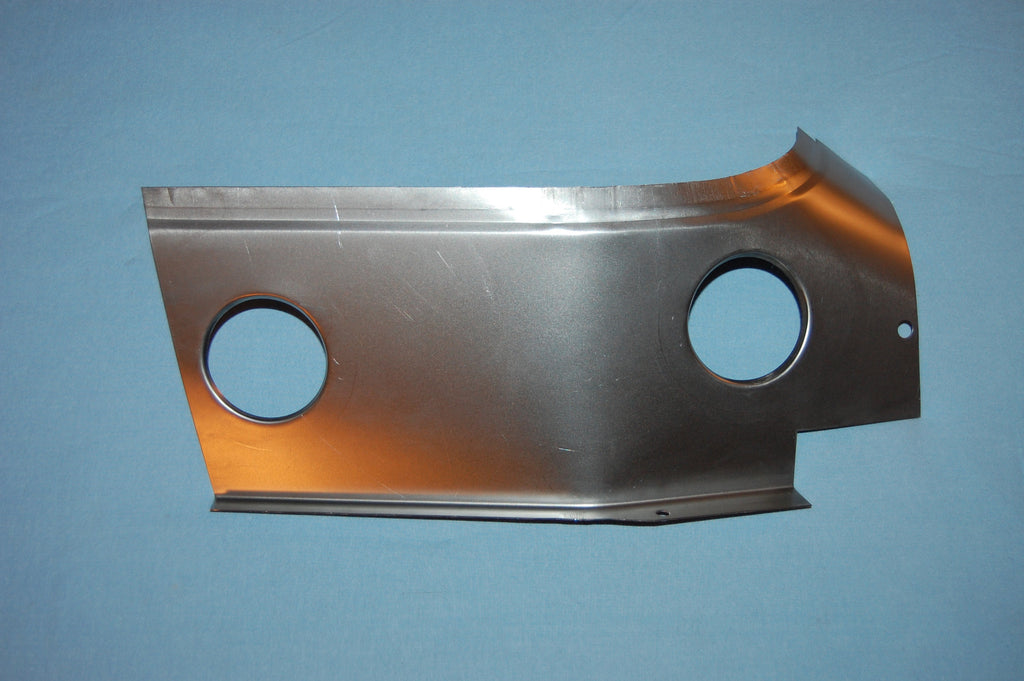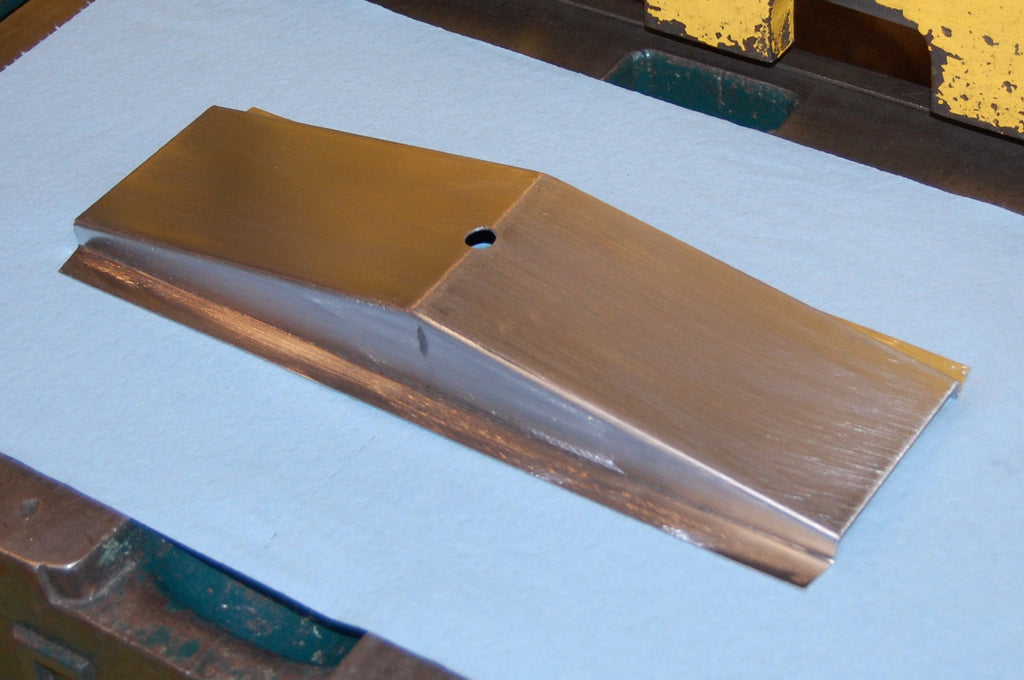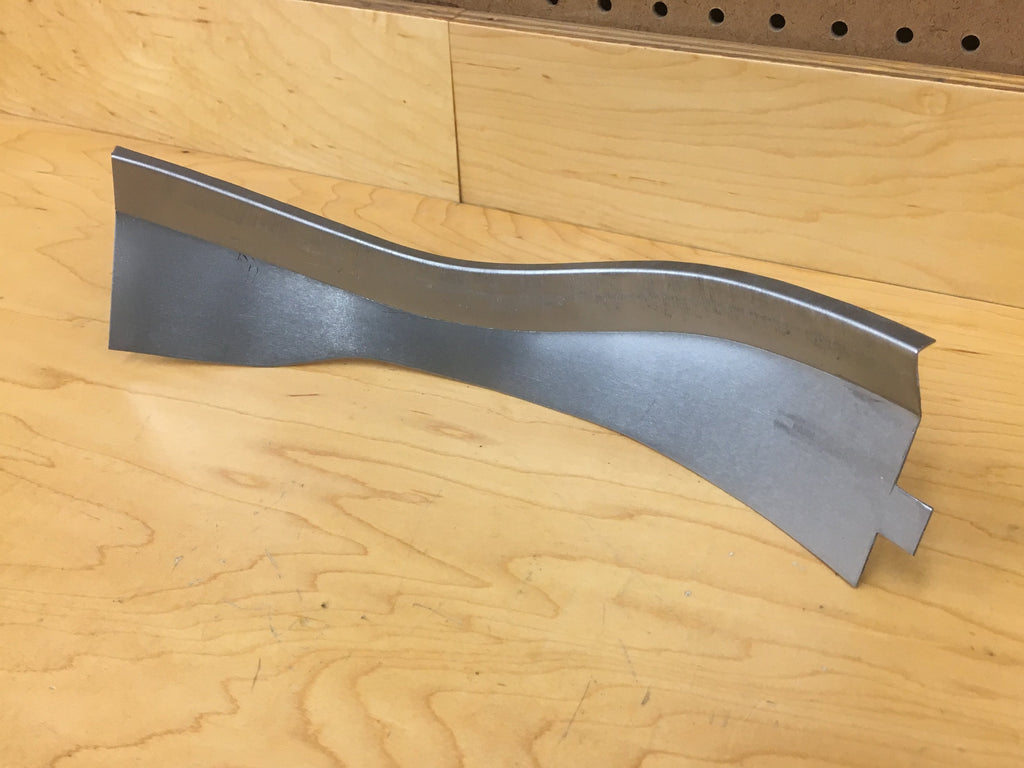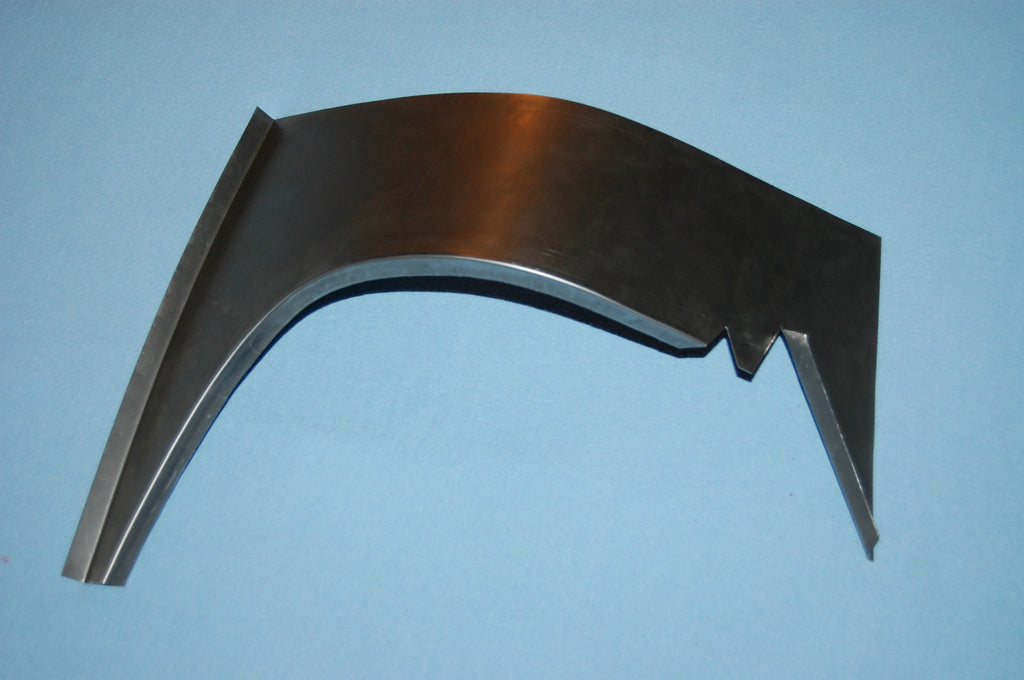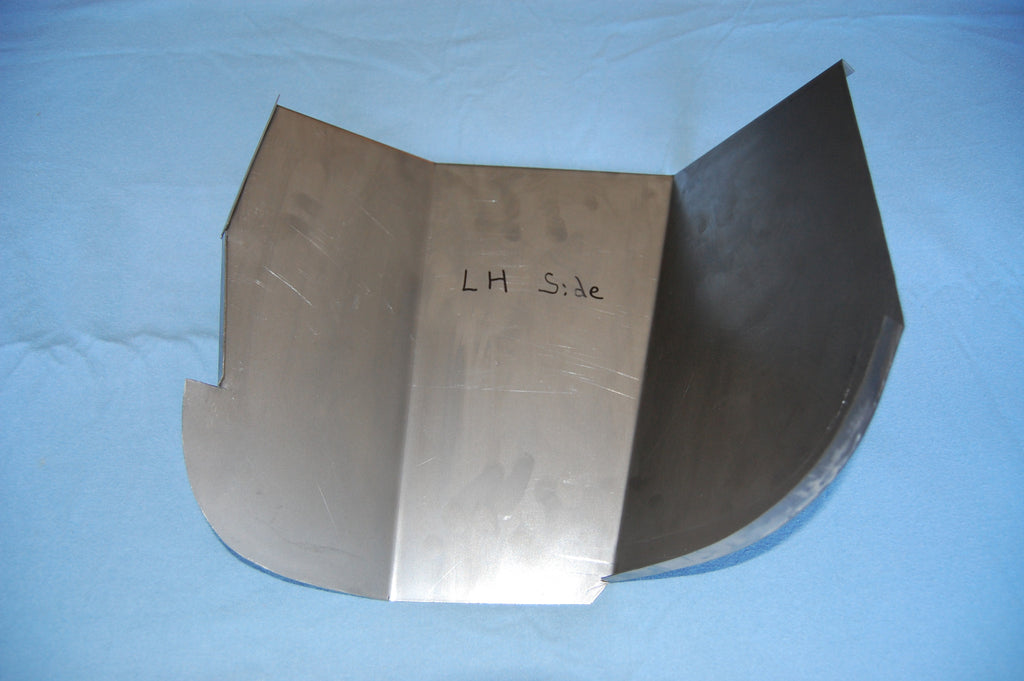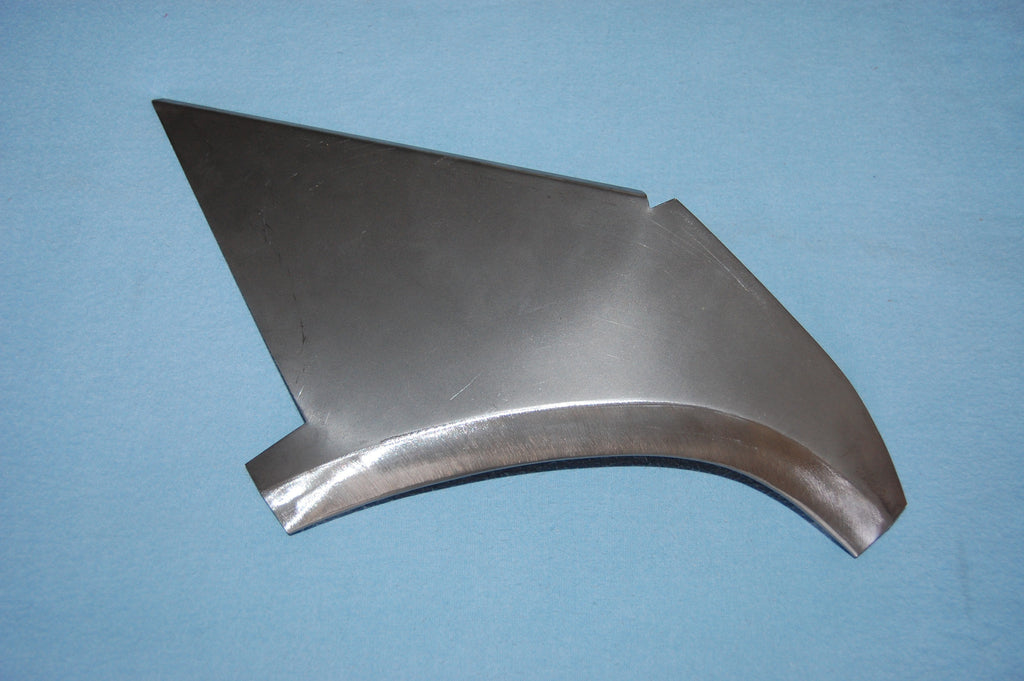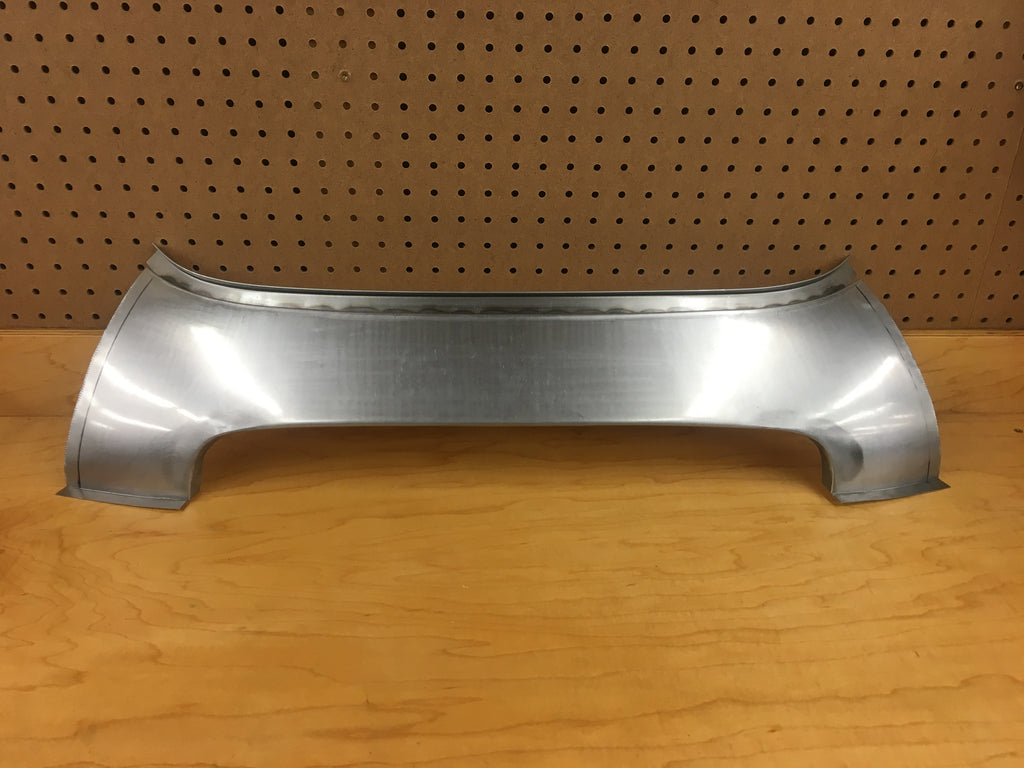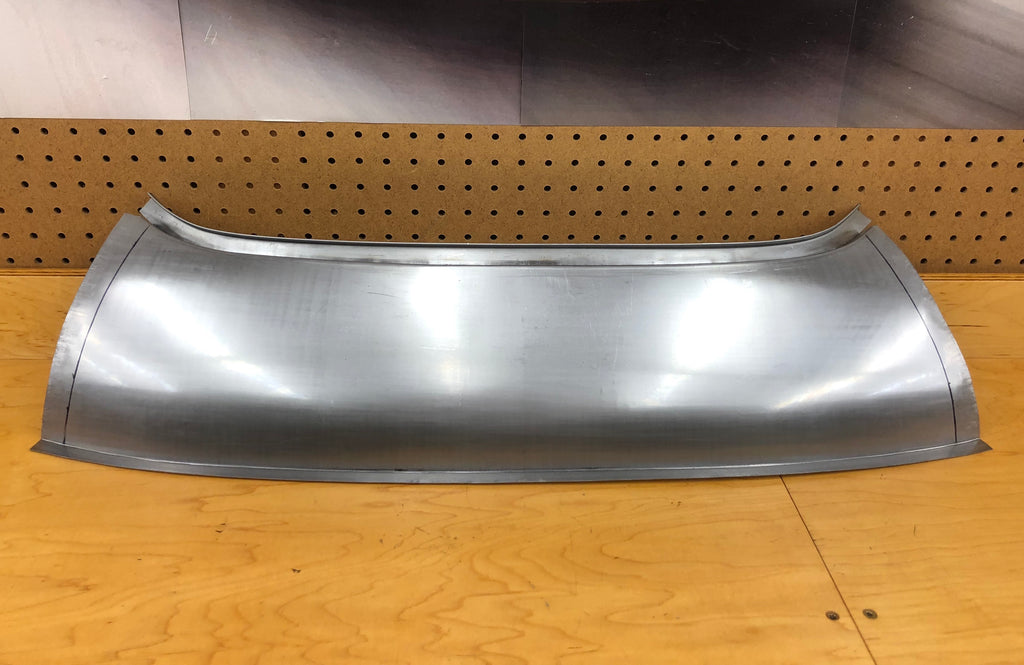This one is pretty cool – it is the 43rd Left-hand Drive E-Type Coupe built! Unfortunately, she has had a rough life – but we are in the process of putting her back into concours condition!
We have had this car for quite some time now, and have been picking away at it a little at a time. In some respects, the shell is actually not that bad. However, there are several very challenging “problem areas” with this project that to be honest, have intimidated me into letting it sit on the back shelf…
This car is a VERY early coupe – the 43rd LHD coupe built, but not necessarily the 43rd E-Type, and actually, not even close to that. My understanding is that Jaguar made several coupes early on, for the Earls Court, New York, and Paris shows, but then quickly turned their attention to the open cars, and started pumping them out very quickly and in great numbers, while some of the coupe body shell challenges were still being worked out. This fact is born out by the existence of 300-something outside bonnet lock roadsters, but only 19 coupes.
Another interesting tidbit is that the early FHC bodies are QUITE different than the later FHC bodies – most people don’t know that, but the owners of early coupes figure it out REAL QUICK when nothing fits! What’s different primarily is the complete roof structure, and anything that attaches to it. The early cars had a roof panel that was seamed in the top two corners of the rear hatch, and the bottom two corners down by the rear lower tonneau panel – just like the roadsters are. These cars also have a multi-piece rear hatch opening drip channel, etc. Later, this was switched so that the panel was one giant single piece, without these 4 leaded seams, and the complete drip channel was all stamped in at one time as part of the roof – it is ALL ONE PIECE!
Overall, the shape is mostly the same, but in redesigning the panel, they seemed to change EVERYTHING that comes into contact with the roof in the process! These early cars have different B-Post pieces that mount the hinge point for the rear 1/4-lites, which are also different in shape! The rear hatch is basically the same shape on the outside, but the inner support structure is different, with different, more primitive hatch hinges. AND the rear hatch glass is different! The rear tail-lamp housings are different as well, and finally, these early coupes actually have their own fuel door that is unlike the later coupes! (I have an extra one here if you have an early car and it is missing!)
In addition to all of the roof panel differences, the early cars in general have alot of small nuances in the body shells. Their handbuilt nature stands out immediately, and many areas seem to be made up of more, simpler panels, where the later cars have a larger stamped piece covering three or 4 panels in the early cars – this is evident in the inner rear wheel arches, for example.
This particular car is #43 – LHD Coupe – NOT the 43rd E-Type, and actually, pretty far from it. Let’s not forget that by the time they had built the 19th LHD coupe, and switched to inside bonnet locks, they had already churned out over 350 LHD roadsters! This E-Type’s body number is V1050, leading me to believe that by the time this LHD coupe was built, they had also built 7 RHD coupes – since the bodies are the same.
What I really like about THIS E-Type is it’s very interesting history – but even more so, the fact that it is owned by an “average guy” – not a large-scale collector of multiple early E-Types. Not that there is anything wrong with that – the early cars SHOULD be preserved, and there are several avid collectors in the US and abroad that have taken that task on and done a great job of it! But this is a great early E-Type that its owner was lucky enough to run across – and save – without even knowing how special it was at the outset!
When the owner and I first met, I was very excited to work on the car, and told him straight off, “This is a RARE E-Type, and you need to prepare yourself mentally (and financially!) to go ALL THE WAY on this car.” – and that was about 3 years ago – before these early cars became all the rage!
When found, this car had – brace yourself – a small-block Ford V-8… BUT – against all odds, when found, the original engine and gearbox was STILL WITH THE CAR – what a stroke of luck! Unfortunately, this engine was damaged and incomplete, but over the past 2 years, I have been helping the owner find the missing pieces – which are all special, early pieces. We did find the correct early triple SU setup – on eBay of all places, and managed to win the auction for a reasonable amount! The linkage is different, with different aluminum intake casting pieces, and the carbs them selves have slight differences as well.
We also managed to find the elusive smooth-sided oil pan – which actually went on ALOT of E-Types in the early years, but still seems to be a real bear to find! We’ll also be employing Charlie, my machinist – and world’s greatest aluminum welder – to repair damage to the head itself.
This blog entry is the first of many, and I will try to highlight the early features for all of you early E-Type nuts (like me…). In these photos, I’m basically just showing you what our starting point is.
- Here she is! Not much to look at currently, but enough for us to bring her back!
- The Ford V-8 conversion is always less invasive than a Chevy V-8 – they are smaller and narrower. Thankfully, the damage to the shell to fit the V-8 in was minimal.
- As you can see, the entire forward bulkhead is intact. Sadly, I have seen may E-Types with V-8 automatics where the WHOLE tunnel was cut out – and a good portion of the firewall too! If you have an E-type like that, we specialize in the tunnel panels, and supplied everything needed to bring back at least half a dozen converted E-Types last year – call us!
- Here are the original doors – with the original 2-piece skins! More on that later…
- Another shot looking rearward. The car came with a complete rear hatch opening drip channel to repair substantial cancerous rust around the rear hatch opening – one of the areas that scared me off a bit. Unfortunately, this piece was cut from a later coupe, which as discussed, is totally different around the hatch versus this very early car. What saddens me about this piece is that I’m sure it came from a coupe shell that I could have saved…
- Another shot of the shell as received. Aside from the rear hatch drip channel problems, the rust on this shell was actually very minimal!
- The car also came in with a new rear lower valance panel to replace this damaged one – and it was an older piece – so it fit great! I actually used it to make the patterns for our patch piece sthat we make here!
- This is grey primer over the original paint. The car was originally Old English White, with a red interior -very common on early E-Types, and often shown in early advertisments in this color combination.
- We will be replacing the complete boot floor, but again, this was also much better than most!
- Another nice aspect of this E-Type – NO WRECKS!
- Here, we’ve emptied the shell, and completed the task of disassembly – removing stubborn brackets and bolts, whate remained of the interior, etc.
- Someone had started the metalwork on this car several years ago. Thankfully, they did not get that far, and nothing was really damaged that wasn’t goin got have to come out anyway…
- Another panel they had begun to remove…
- The earlier work was being done carefully at least – they were trying to keep things aligned as they removed panels by welding in supports here and there. This cross brace was tacked in by the current owner as a safety precaution for the trip up to our shop.
- Now obviously, the floor was cut out to repair rust, but what’s missing from the tunnel was removed as part of the V-8 conversion. The LH gearbox side panel is standard, but the RH seems to be a special piece – because – there is NO WEDGE PANEL – they hadn’t gigured that one out yet! We’ll discuss this more later on, as we replace these pieces with new ones fabricated here to match EXACTLY what this early car had. How do we know? – LHD FHC #41 was in here a few years ago!
- We will be replacing both outer sills – and both inner sills, and the full floors as well.
- Remnants of the original red interior. This shell is really in GREAT shape considering that it is the OLDEST of E-Types!
- This rust on the inner sill was undoubtedly caused by leaking door and windo seals, wetting down the sill covering, and then the door closed directly over it not allowing the moisture to escape.
- Here is a shot of some of the rear hatch drip channel damage – but it is actually the worst at the top of the hatch. But overall, straight and solid where it counts – we will make her GREAT again!

